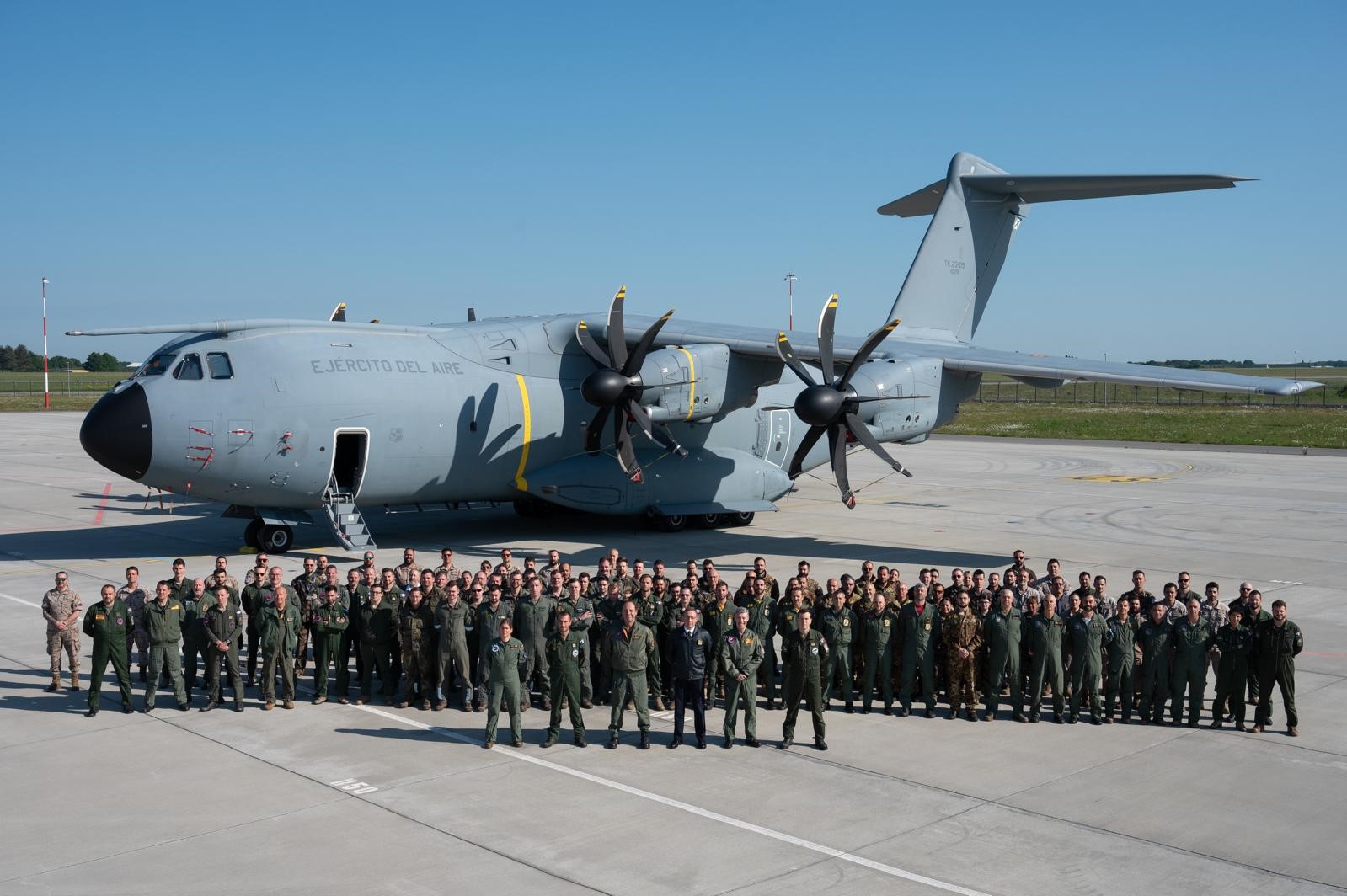The 49th Wing of the Spanish Air and Space Force has been the centre of European Tactical Airlift operations between 3rd and 5th June 2025.
During 3rd, 4th, and 5th June, the Air and Space Force (EA) hosted a series of significant events in the field of European tactical air transport, consolidating itself as a cornerstone of European cooperation within the ETAP (European Tactical Airlift Programme). These activities, organised by the European Tactical Airlift Centre (ETAC) and the European Air Transport Command (EATC), took place at the 49th Wing (So San Joan Air Base, Palma de Mallorca), with the collaboration of the air forces of the participating nations, as well as various key institutions and companies in the defence sector.
Over these three days, the support provided by the General Air Command (MAGEN) and the 49th Wing was crucial in ensuring the smooth development of the three events.
ETAP-S Symposium:
The first major milestone of these three days was the ETAP-S (ETAP Symposium), which brought together representatives from the 14 nations that are part of the ETAP project, as well as experts from the USAF’s Advanced Airlift Tactics Training Center (AATTC), the Airbus Seville ITC (Airbus Defense & Space International Training Center), and the company Carbotech (producer of passive anti-aircraft systems). In addition, countries such as Poland and Sweden, which are not permanent members of ETAP but have shown active interest in European air cooperation projects, also participated.
During the event, crucial topics were discussed regarding the evolution of tactical airlift capabilities and tactics, emphasising the need to continue learning from recent conflicts and adapting to new geopolitical demands.
ETAP Steering Board: ETAC’s Challenges
On the second day, ETAC hosted the ETAP Steering Board, a high-level meeting between representatives from the member nations, acting as the governing body of the EATC. The EATC commander, Colonel Herraiz (EA), presented the challenges the centre faces, including staffing issues that have impacted the centre’s operations in recent years.
Despite these challenges, ETAC remains a key component in the training of tactical military airlift crews, working collaboratively with participating nations to maintain high operational standards.
ETAC – EATC Standardization Board: Evolution of Procedures
Simultaneously, the “ETAC-EATC Standardization Board” took place, where the EATC’s “Training Branch” and ETAC worked with experts from the nations to review and update the ETTP (European Tactics Techniques and Procedures), which regulate the doctrine, tactics, and procedures of tactical airlift crews in Europe. This document, which harmonises the TTPs of the 14 participating countries of ETAP and is increasingly used as a reference beyond European borders, is crucial for standardising the tactics, techniques, and procedures (TTPs) used in missions.
The concern of several European nations was evident during the discussions: the need to adapt tactics and procedures to the rapid changes in the global geopolitical landscape, especially in the face of current conflicts. The lessons learned from recent scenarios are being incorporated into the development of new doctrines, with the aim of enhancing the response capability of European air forces in crisis situations.
Special attention was given to the inclusion of the new capabilities of the Airbus A400M, whose impact on tactics and procedures is considerable. The aircraft, which represents a technological revolution in tactical airlift, forces a rethinking of both mission planning and operational procedures. The participation of representatives from the 31st Wing of the Air and Space Force was particularly relevant, highlighting the importance of integrating the capabilities of this cutting-edge aircraft into European operational manuals.
Conclusions and Future Prospects
This event reaffirmed the importance of cooperation between European nations in the field of tactical airlift and demonstrated the ongoing commitment to the modernisation of operational procedures. The joint work between nations and international bodies, as well as the integration of new technologies, is crucial to ensuring the effectiveness and flexibility of air transport missions in a changing global context.
The Air and Space Force continues to be a key player in strengthening military cooperation in Europe, contributing to the evolution of operational procedures and capabilities in tactical airlift across the continent.







